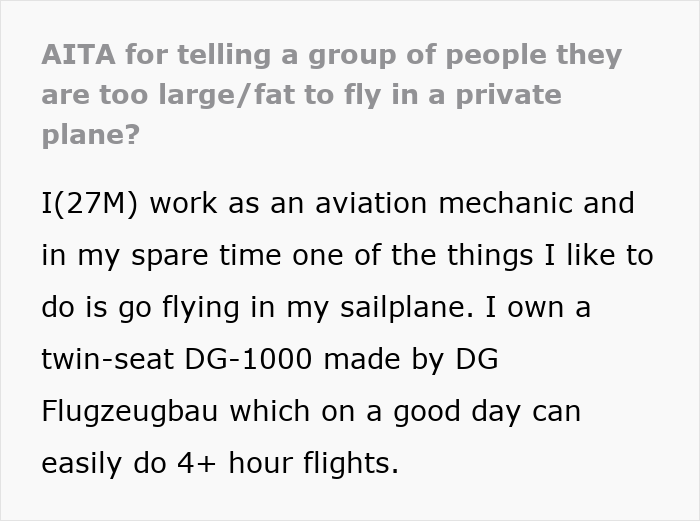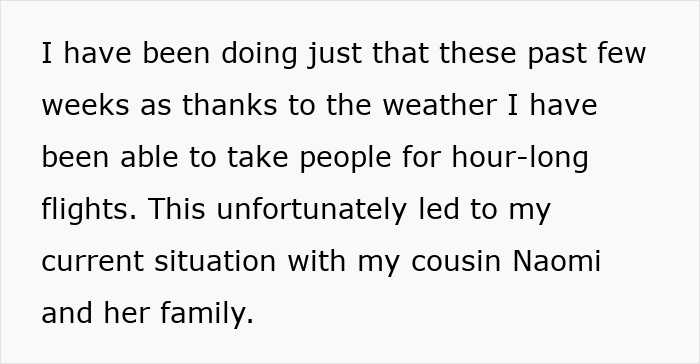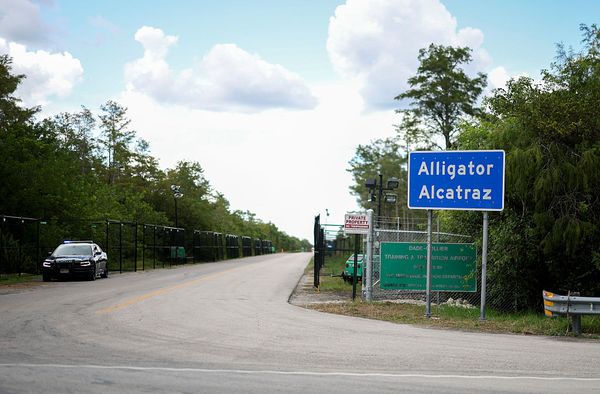When it comes to flying, the safety of everyone on board should be your number one priority. You have to put it above all else. Sometimes, this means having an uncomfortable talk with your passengers. This might mean that, no matter how diplomatic you are or how you sugarcoat it, someone’s feelings are bound to get hurt.
An aviation mechanic and pilot asked the AITA community for a verdict on whether he messed up by barring his obese relatives from boarding his small private plane. According to him, all hell broke loose when he told them the news. Check out the story below, and keep scrolling to see how the internet saw the entire situation.
An aircraft’s weight and its distribution onboard significantly impact its performance

Image credits: Ahmed / unsplash (not the actual photo)
A pilot asked the net whether he was wrong to refuse to let his obese relatives board his private plane, due to safety concerns



Image credits: Getty Images / unsplash (not the actual photo)




Image credits: Getty Images / unsplash (not the actual photo)



Image credits: CloudCowboy1
Airlines sometimes do studies on passenger weight to check their standard averages

Image credits: Paul Hailday / wikimedia (not the actual photo)
According to the author, he owns a twin-seat DG-1000, made by DG Flugzeugbau. This is a two-seater class glider that comes in an 18-meter (59-foot) or 20-meter (66-foot) wingspan. This plane serves as a basic soaring trainer for cadets at the United States Air Force Academy.
One of the variants, the DG1000T, has a maximum takeoff weight of 750 kilograms (1,653 pounds) and an empty weight of 461 kilograms (1,016 pounds).
Broadly speaking, passenger and luggage weight is vital in planes because it affects many aspects of the flight. For instance, it impacts the performance, center of gravity, fuel efficiency, and takeoff mass. (Of course, fuel efficiency matters in the case of regular planes and commercial flights, not gliders.)
What’s more, (im)proper distribution of weight within the plane can affect the stability and control of the aircraft. It’s all in the name of safety when taking off, cruising, and landing.
Something you might notice in the news from time to time are articles about airlines weighing passengers. According to the EASA, when airlines do this, their main focus is on safety and efficiency.
“Aircraft are certified against maximum take-off mass, which includes the mass of the aircraft itself plus passengers, luggage, fuel, and other load items,” the EASA explains.
“It would be rather challenging to weigh all passengers, crew, and hand luggage before every single flight, therefore, standard averages are used in these calculations. These standard averages are defined in the rules for air operations and are periodically reviewed to ensure they reflect current trends and maintain safety margins. The safety margins are needed to accommodate variations in passenger weights or in other load items. And that’s why occasionally there is a need to conduct such studies on passenger weight—to check that the standard averages are still correct.”
More weight typically means less efficient, costlier, shorter flights

Image credits: Rod Long / unsplash (not the actual photo)
In a nutshell, weight impacts aircraft performance in some of the following ways:
- Heavier planes need longer distances on the runway for take-off and landing
- More weight leads to higher fuel consumption, which is less efficient and makes flights more costly
- Aircraft that take on more (or heavier) passengers will be able to carry less cargo or fly shorter distances
That being said, the balance of the aircraft is important, too. How you distribute the weight within the plane is absolutely vital.
“The correct position of the centre of gravity is essential for the stability and control of the aircraft. It also has an impact on fuel consumption. Airlines may adjust passenger seat allocations and cargo distribution to ensure the aircraft’s centre of gravity is within safe limits. This helps maintain stability and efficiency during flight,” the EASA says.
Upon seeing that weight limits might be exceeded on a particular flight, with regard to documentation about the number and type of passengers, airlines might decide to change some things. For example, they may reduce the number of passengers or cargo. They might also adjust fuel quantity or redistribute passengers and luggage for the sake of balance.
What are your thoughts, Pandas? Do you think the pilot was in the wrong for refusing to let his larger relatives on the aircraft? How would you have handled the situation? What’s the weirdest thing that you’ve witnessed happening on a plane? Let us know in the comments below.
The absolute majority of readers thought the pilot did the right thing. Safety is no joke



















Some folks had similar stories that they wanted to share. Here are their experiences










